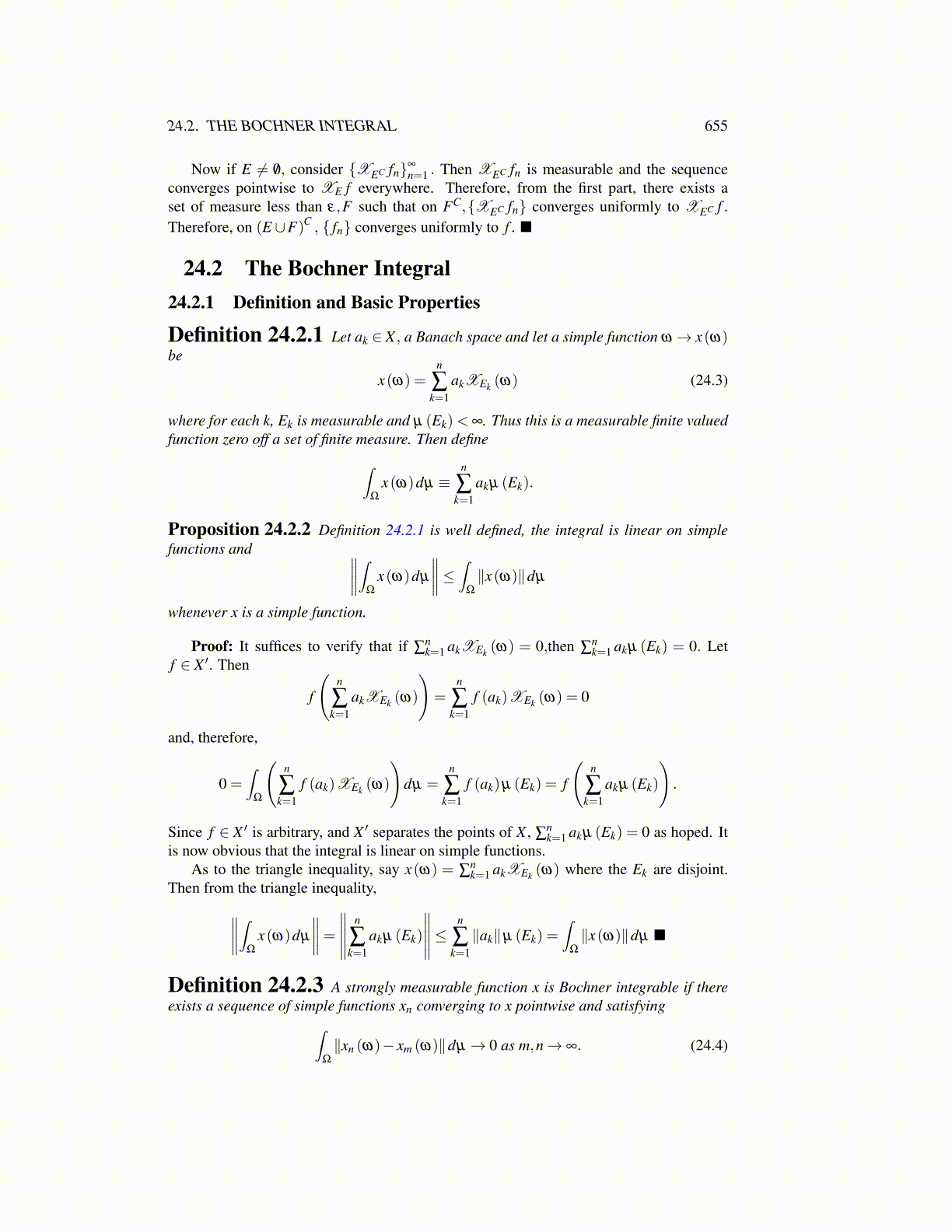
24.2. THE BOCHNER INTEGRAL 655
Now if E ̸= /0, consider {XEC fn}∞
n=1 . Then XEC fn is measurable and the sequenceconverges pointwise to XE f everywhere. Therefore, from the first part, there exists aset of measure less than ε,F such that on FC,{XEC fn} converges uniformly to XEC f .Therefore, on (E ∪F)C , { fn} converges uniformly to f . ■
24.2 The Bochner Integral24.2.1 Definition and Basic Properties
Definition 24.2.1 Let ak ∈ X , a Banach space and let a simple function ω→ x(ω)be
x(ω) =n
∑k=1
akXEk (ω) (24.3)
where for each k, Ek is measurable and µ (Ek)< ∞. Thus this is a measurable finite valuedfunction zero off a set of finite measure. Then define∫
Ω
x(ω)dµ ≡n
∑k=1
akµ (Ek).
Proposition 24.2.2 Definition 24.2.1 is well defined, the integral is linear on simplefunctions and ∥∥∥∥∫
Ω
x(ω)dµ
∥∥∥∥≤ ∫Ω
∥x(ω)∥dµ
whenever x is a simple function.
Proof: It suffices to verify that if ∑nk=1 akXEk (ω) = 0,then ∑
nk=1 akµ (Ek) = 0. Let
f ∈ X ′. Then
f
(n
∑k=1
akXEk (ω)
)=
n
∑k=1
f (ak)XEk (ω) = 0
and, therefore,
0 =∫
Ω
(n
∑k=1
f (ak)XEk (ω)
)dµ =
n
∑k=1
f (ak)µ (Ek) = f
(n
∑k=1
akµ (Ek)
).
Since f ∈ X ′ is arbitrary, and X ′ separates the points of X , ∑nk=1 akµ (Ek) = 0 as hoped. It
is now obvious that the integral is linear on simple functions.As to the triangle inequality, say x(ω) = ∑
nk=1 akXEk (ω) where the Ek are disjoint.
Then from the triangle inequality,∥∥∥∥∫Ω
x(ω)dµ
∥∥∥∥=∥∥∥∥∥ n
∑k=1
akµ (Ek)
∥∥∥∥∥≤ n
∑k=1∥ak∥µ (Ek) =
∫Ω
∥x(ω)∥dµ ■
Definition 24.2.3 A strongly measurable function x is Bochner integrable if thereexists a sequence of simple functions xn converging to x pointwise and satisfying∫
Ω
∥xn (ω)− xm (ω)∥dµ → 0 as m,n→ ∞. (24.4)